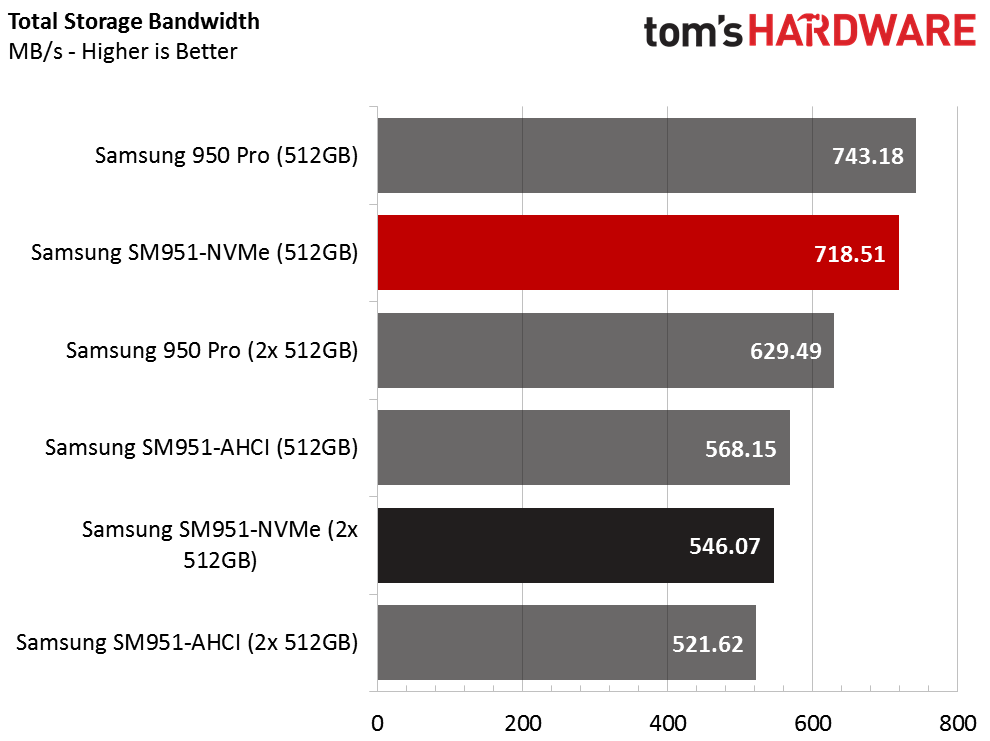Samsung SM951-NVMe RAID Review
The Samsung 950 Pro is available now and it's a hot seller, but the SM951-NVMe still packs a better value for shoppers looking to save. Today, we look at three Samsung PCIe solutions in both single-drive and RAID 0 configurations.
Why you can trust Tom's Hardware
Real-World Software Performance Testing
PCMark 8 Real-World Software Performance
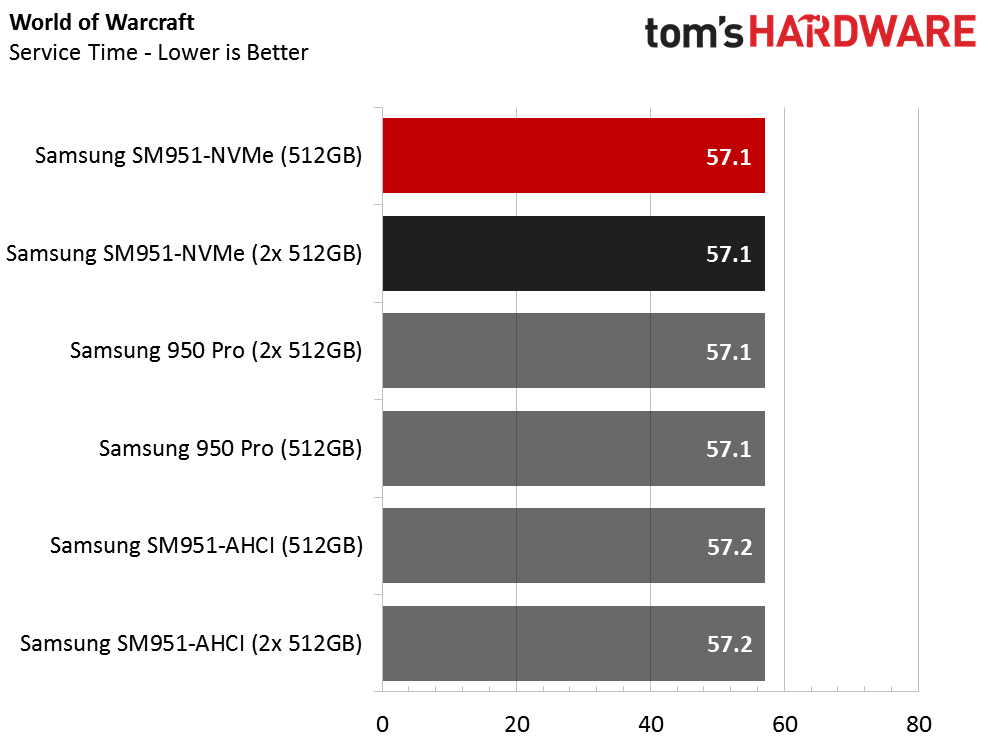
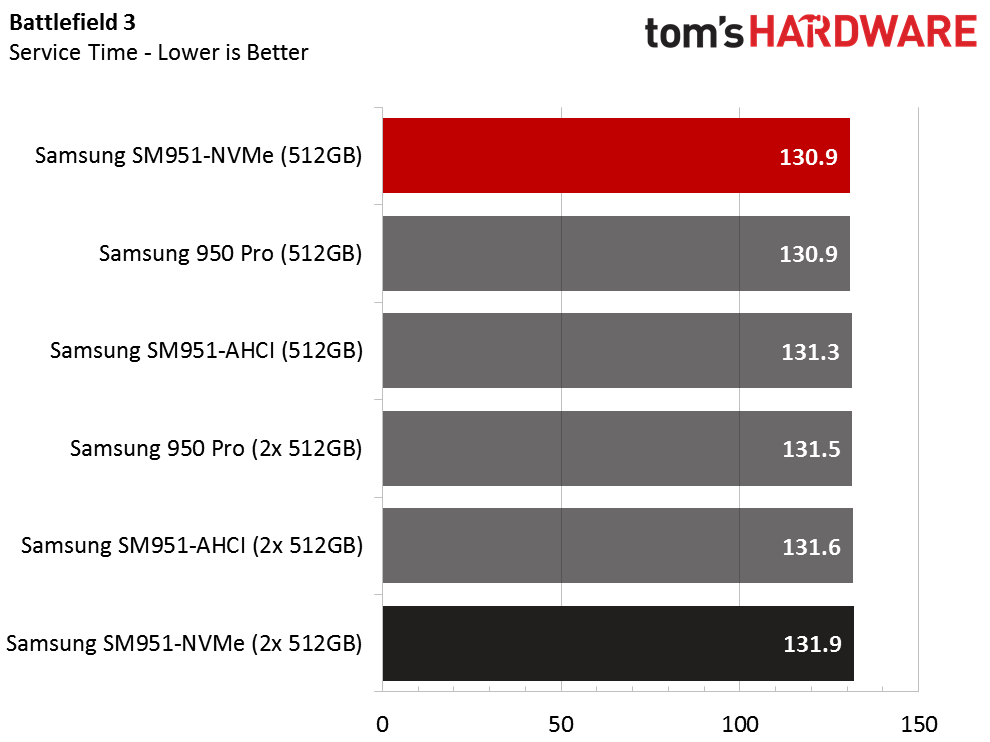
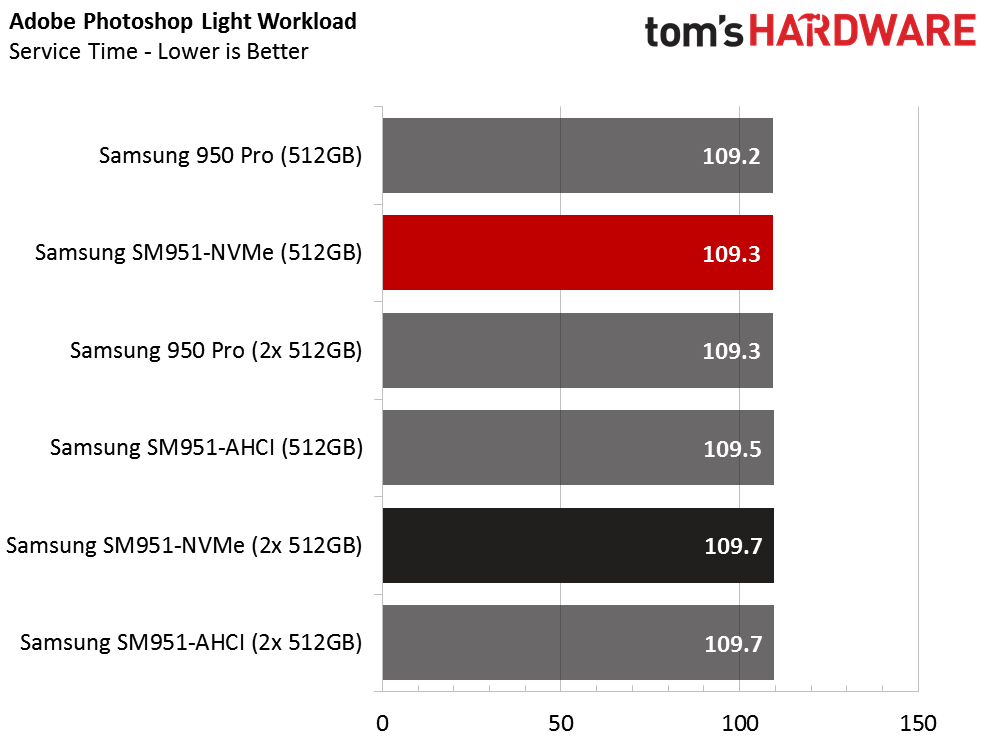
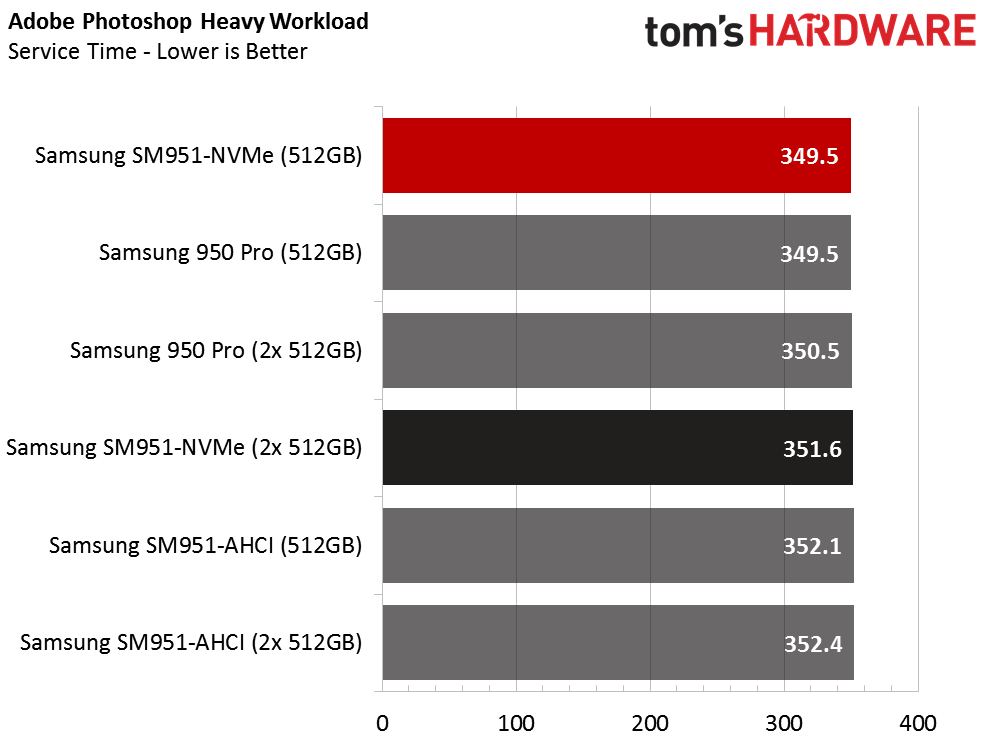
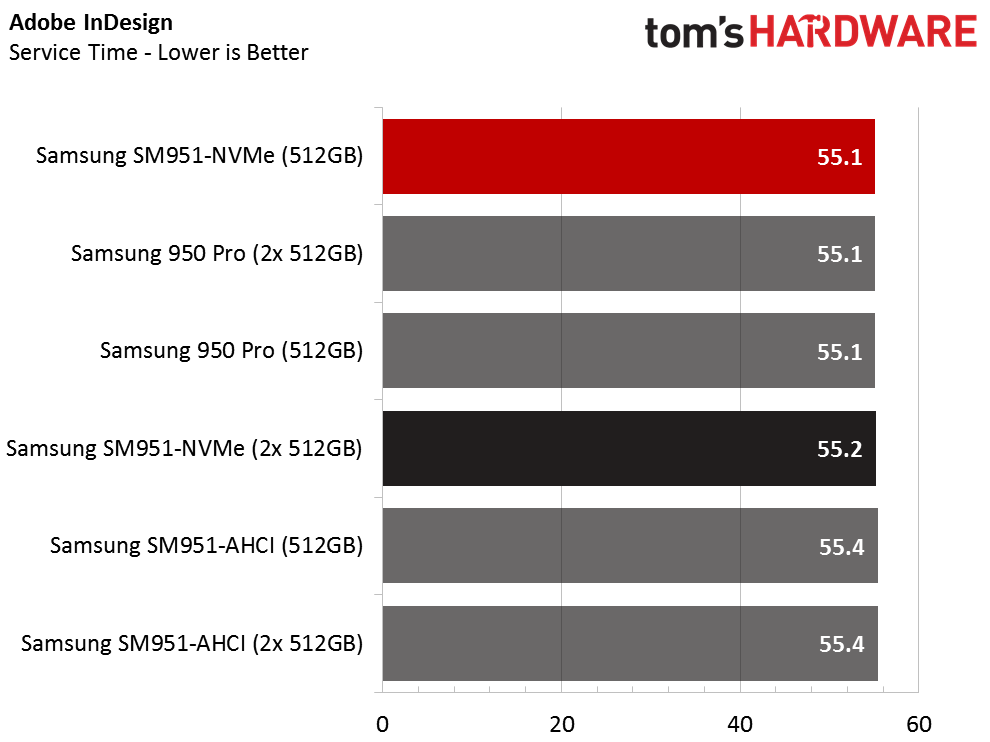
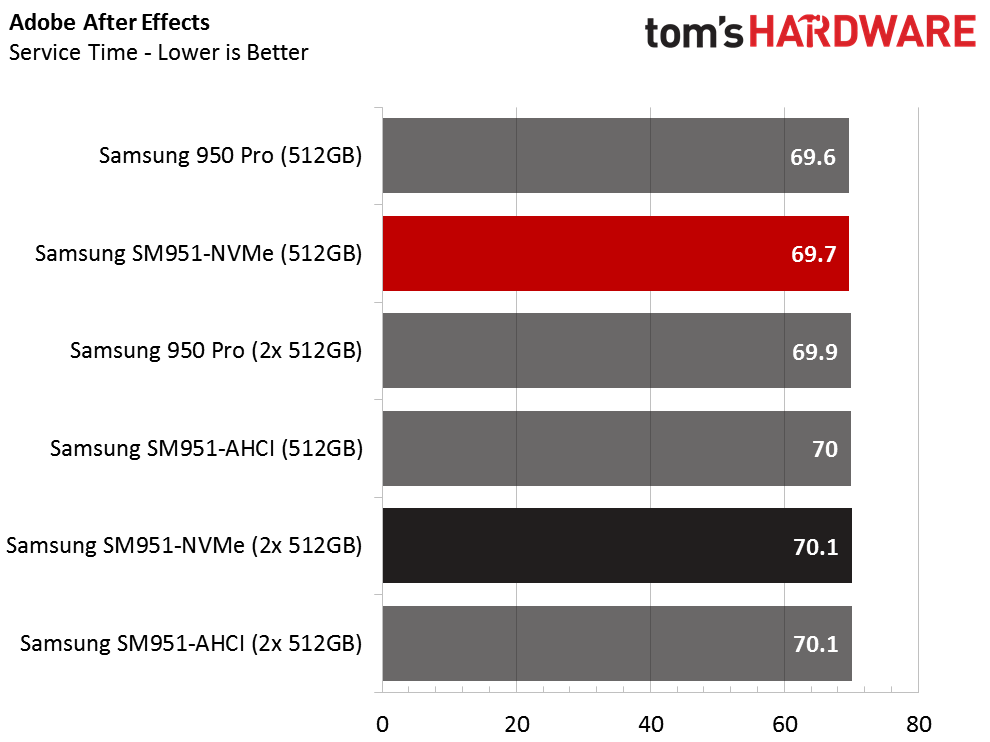
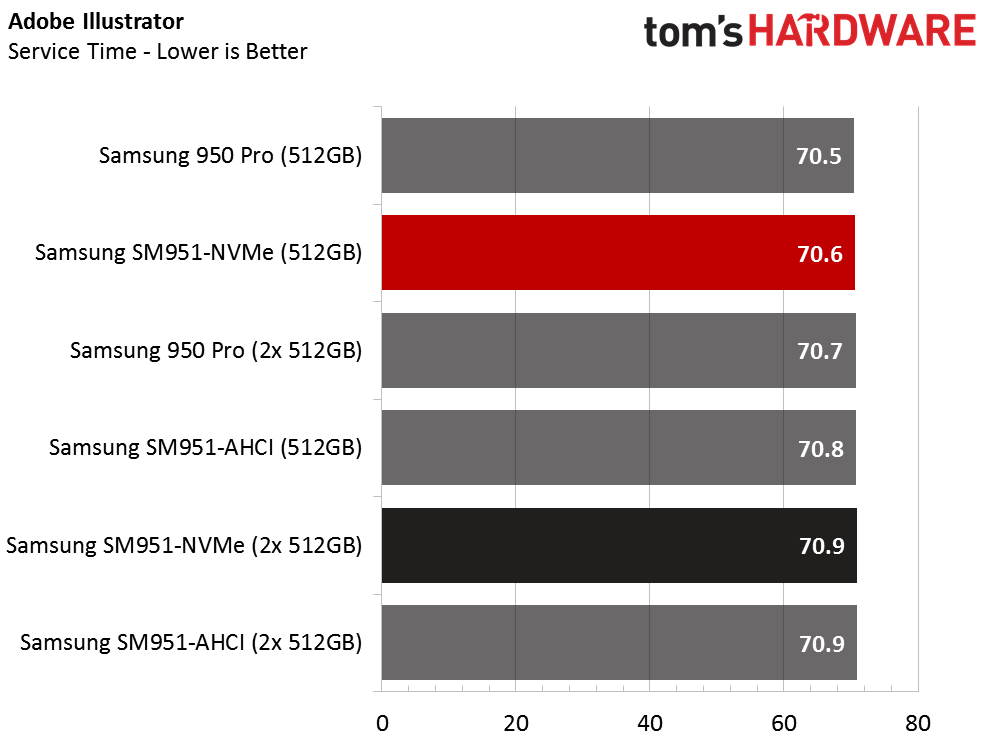
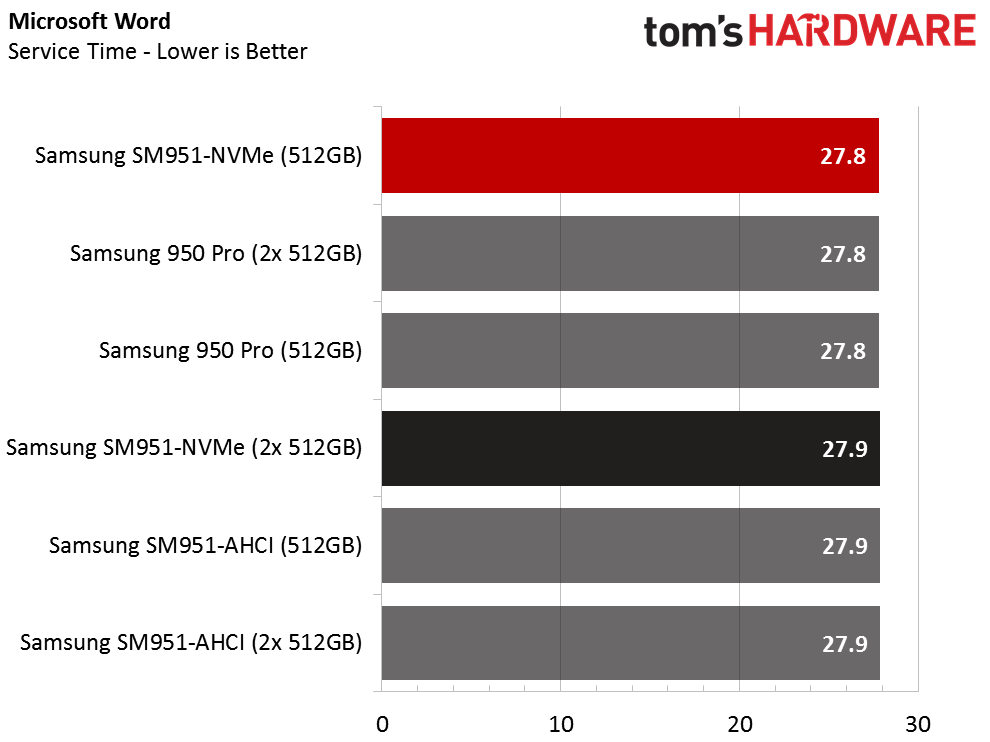
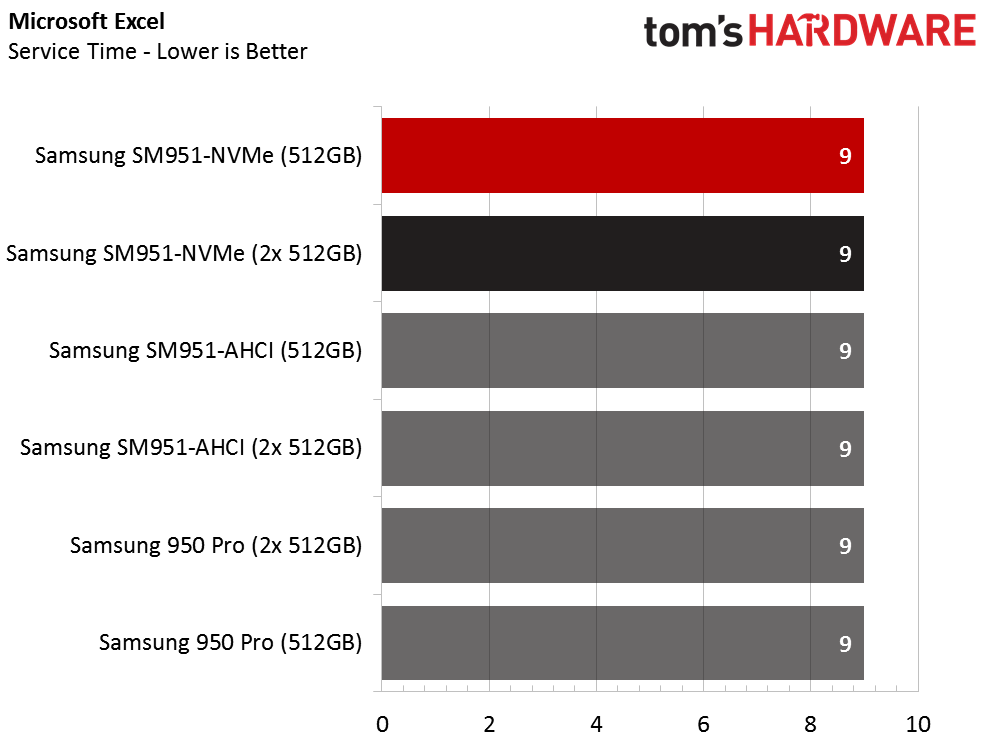
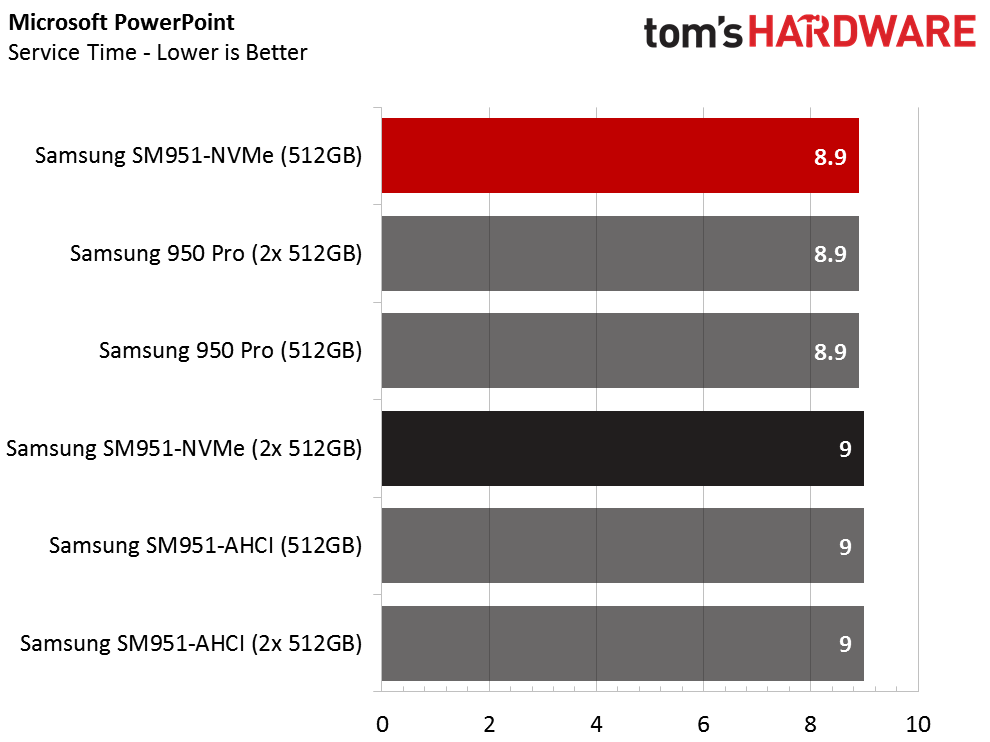
Using time-to-complete as a performance measurement, even the Adobe Photoshop Heavy Test shows very little separation. All of these drives and configurations fare almost identically.
Throughput
What we do see, though, is that striped arrays often take longer to finish these tasks. Client workloads simply aren't taxing enough to stack commands the way our RAID arrays would need to outshine single drives.
To really exploit the extra bandwidth, the software needs to push the storage subsystem harder. Even small CAD and CAM workloads shove most of the data into DRAM. It isn't until you work with extremely large data sets that RAID can improve upon this level of baseline performance. If anything, the biggest benefit you get from two drives striped together is a larger volume to work from.
PCMark 8 Advanced Workload Performance
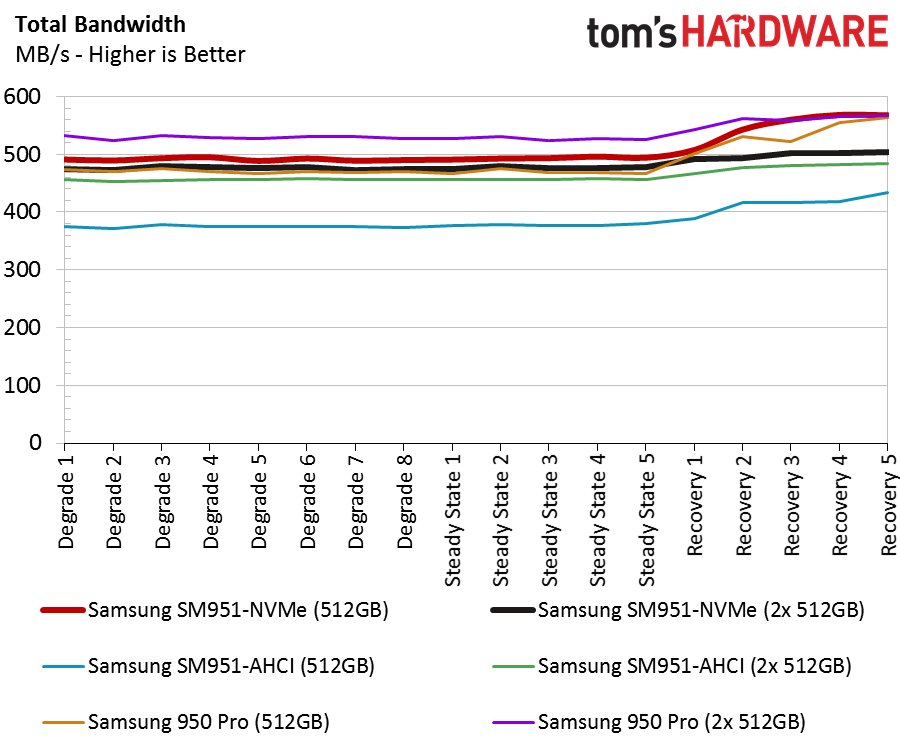
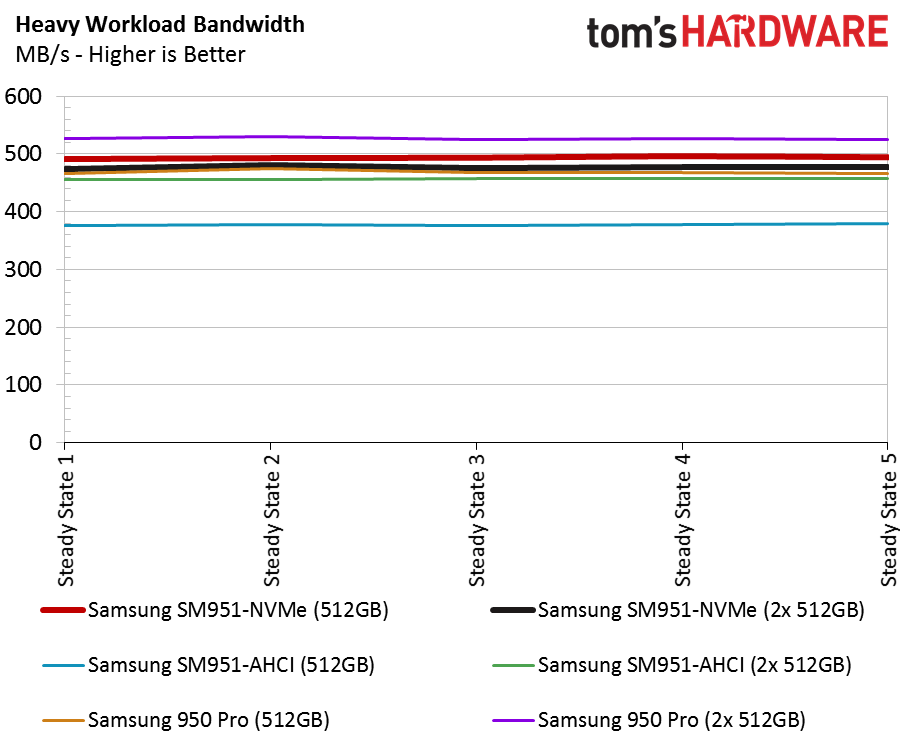
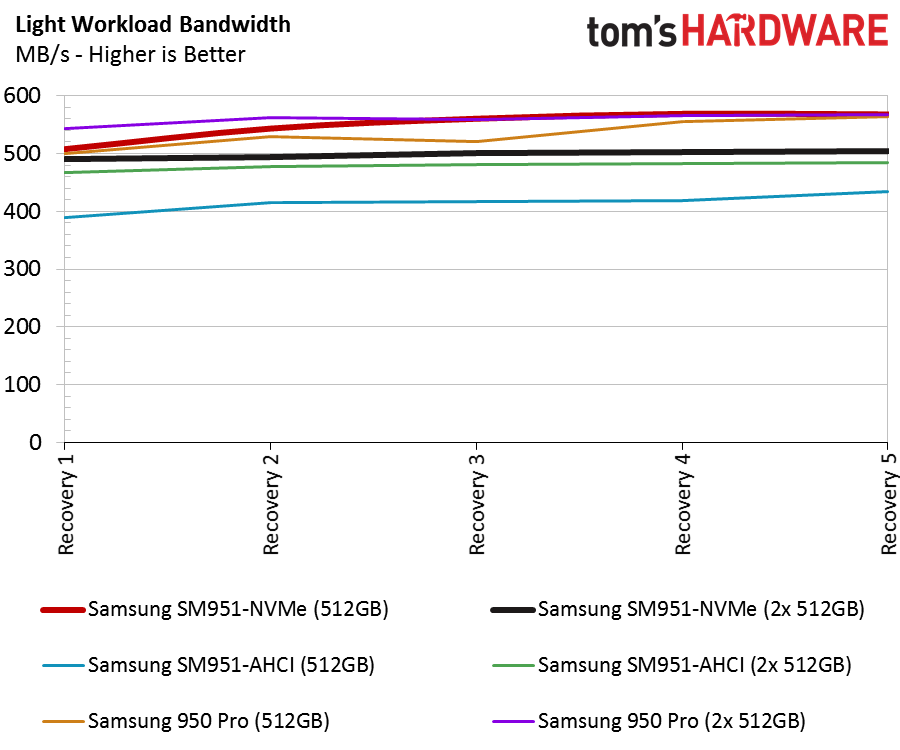
This set of metrics illustrates performance during and after steady state conditions. Most desktop users should focus on the Recovery portion, where the drives have idle time to execute their garbage collection and background flash management activities. The wear from the Degrade tests also simulates what you'll encounter with a lot of data on your SSD.
Frankly, we still don't fully understand the ins and outs of these drives yet. One variable we haven't worked out is the way thermal throttling works. In our first test with Lenovo's AHCI-attached SM951, we ran into throttling conditions, even with a fan blowing air over Samsung's controller. The SM951 AHCI we received from RamCity had newer firmware and didn't throttle as much. Lenovo released a firmware update to increase the point at which the SSD throttles. Then we fielded another SM951 AHCI from Lenovo (one we're using today) with an even newer software version that isn't available online yet.
Samsung's SM951 is purchased by a number of system integrators, and we suspect that most request specific firmware enhancements. Where, exactly, a drive throttles is an important variable to set, since M.2 drives are predominantly used in notebooks. All of this is to say that our array of 950 Pros enjoy a slight advantage over the SM951-NVMe array. We suspect throttling and firmware play a part in this. When the load lightens, both pairs deliver almost identical performance.
Total Access Time
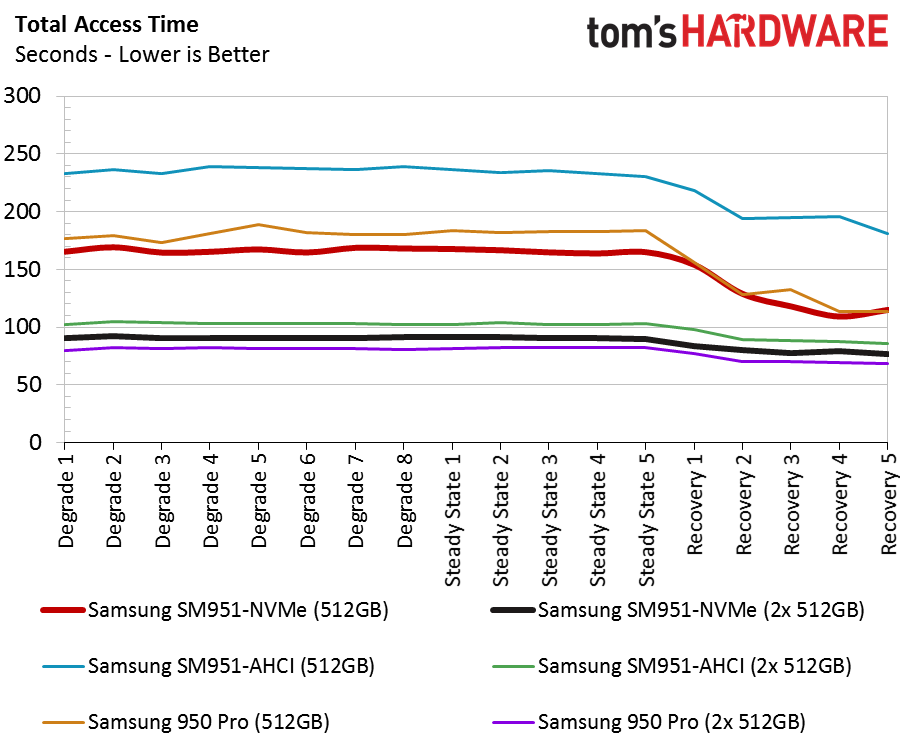
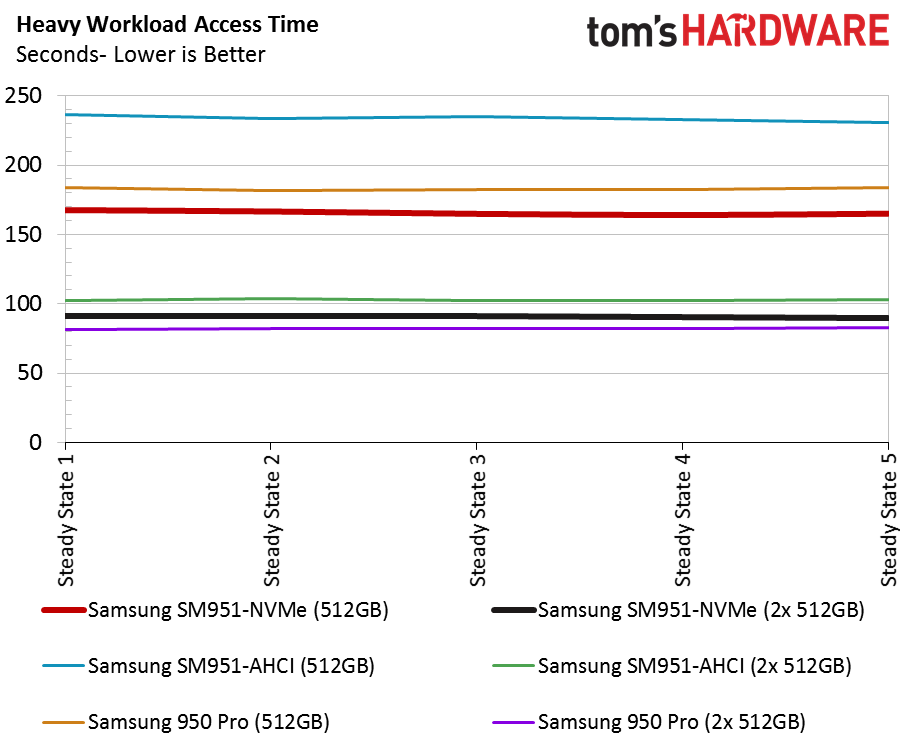
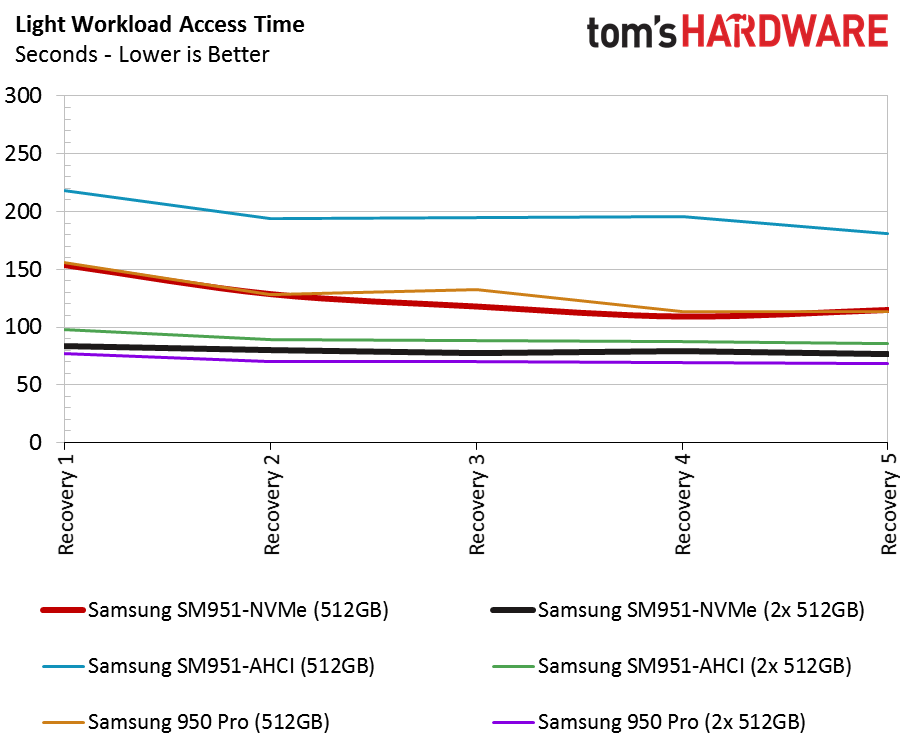
The access time test also favors the striped 950 Pros, but again only by a small margin. The best single-drive access time goes to the SM951-NVMe. This crisscross happens throughout our comparison, and it may cause you to question which models are truly better. For the most part, they're evenly matched. Although one model shows better in one test, it comes up short in another.
Get Tom's Hardware's best news and in-depth reviews, straight to your inbox.
Current page: Real-World Software Performance Testing
Prev Page Performance Testing Next Page Conclusion
Chris Ramseyer was a senior contributing editor for Tom's Hardware. He tested and reviewed consumer storage.
-
CaedenV Conclusion: Putting this in your gaming PC is a waste of money... but having this RAID setup in a WSUS or SQL Server for a school or medium sized business would make things fly at unbelievable speeds!Reply
Man I can't wait to have NVMe capabilities, but the real world performance advantage is not that great compared to my current setup. Hopefully in a few years when truly fast DDR4 gets cheap, and we have truly 4K capable single-GPU solutions that don't cost $500+ then it will be time to do a massive overhaul. -
abbadon_34 ReplyConclusion: Putting this in your gaming PC is a waste of money... but having this RAID setup in a WSUS or SQL Server for a school or medium sized business would make things fly at unbelievable speeds!
Man I can't wait to have NVMe capabilities, but the real world performance advantage is not that great compared to my current setup. Hopefully in a few years when truly fast DDR4 gets cheap, and we have truly 4K capable single-GPU solutions that don't cost $500+ then it will be time to do a massive overhaul.
/me drools at the thought -
Non-Euclidean So I wasted my money. Sue me.Reply
What I want to know is did Samsung finally manage to put the label on right side up? From the second page of the article it looks like they did. About time.
The Random Steady State graph is mislabeled. It should be "This is your brain on NVMe"
And the conclusion is a bit off also. The 950 Pro is going for 326 at NewEgg and has been in that ballpark for a while. -
xenol ReplyConclusion: Putting this in your gaming PC is a waste of money... but having this RAID setup in a WSUS or SQL Server for a school or medium sized business would make things fly at unbelievable speeds!
Unless those inquiries are huge, I'm not even sure about that. The AHCI access time isn't too far off from NVMe in RAID.
Man I can't wait to have NVMe capabilities, but the real world performance advantage is not that great compared to my current setup. Hopefully in a few years when truly fast DDR4 gets cheap, and we have truly 4K capable single-GPU solutions that don't cost $500+ then it will be time to do a massive overhaul.
Access time is what kills these kinds of things. -
2Be_or_Not2Be RAID-5 isn't the only path to fault tolerance; RAID-1 (simple mirroring) also gives you fault-tolerance with only two drives. Of course, capacity is only the size of 1 drive.Reply
It can give you a bit higher read performance, too, though mainly at higher queue depths. -
dgingeri How is the SM951 a better deal? On Amazon, the SM951 is $10-25 more expensive, depending on capacity. I don't see how this is "better value."Reply -
CRamseyer At the time of writing the SM951-NVMe 512GB was lower than the 950 Pro. I still show the 512GB model with a lower price but the gap is much less now.Reply -
dgingeri I'm showing the 512GB 950 pro at $327 on Amazon as the lowest price I could find. I found the 512GB SM951 for $325. That's not much discount considering the warranty coverage and durability.Reply
